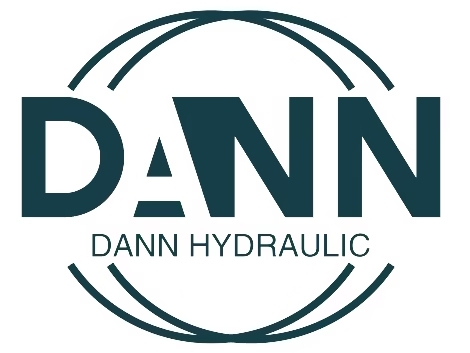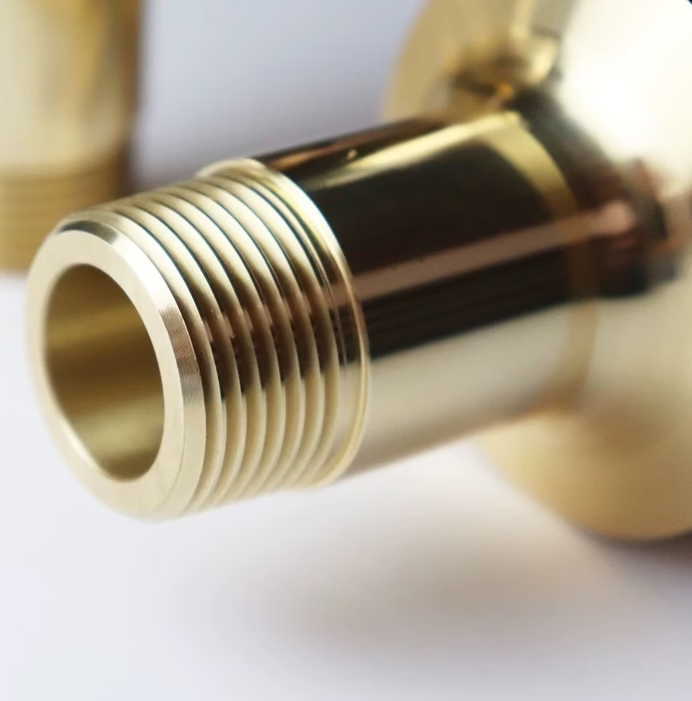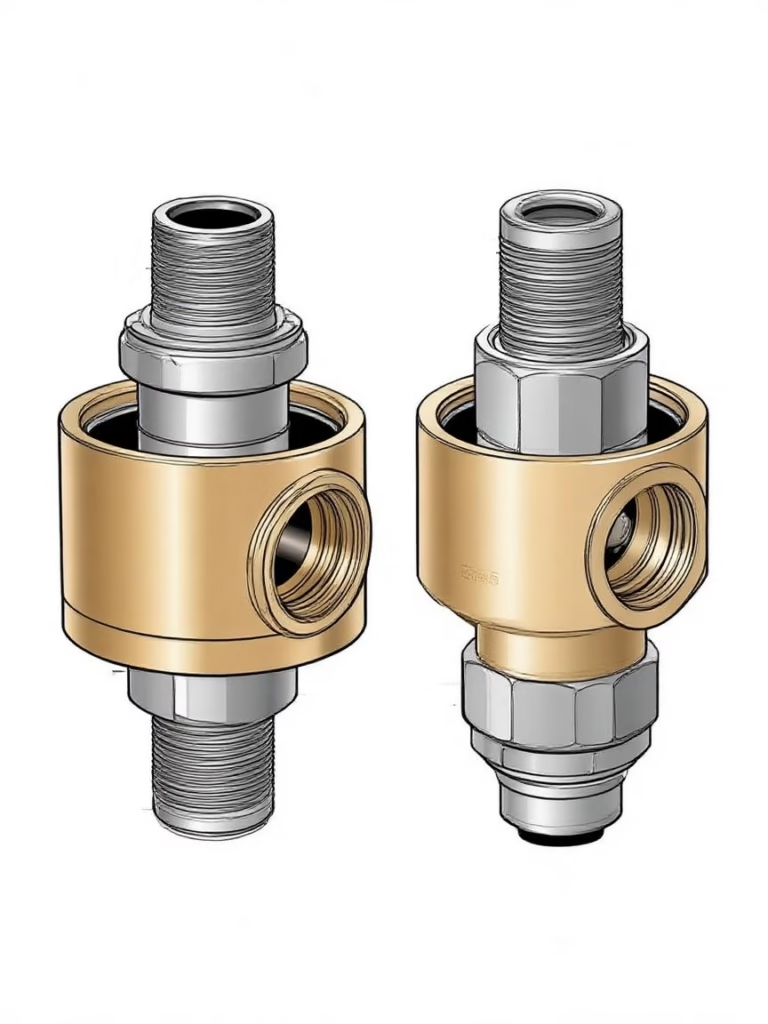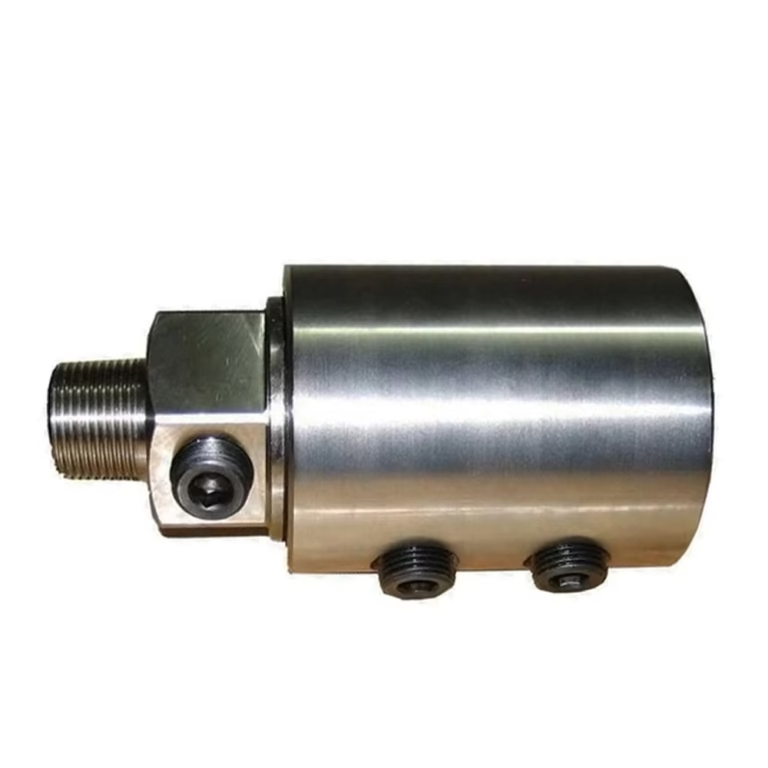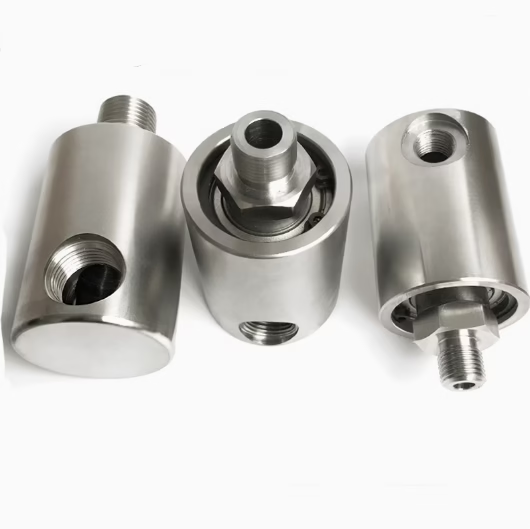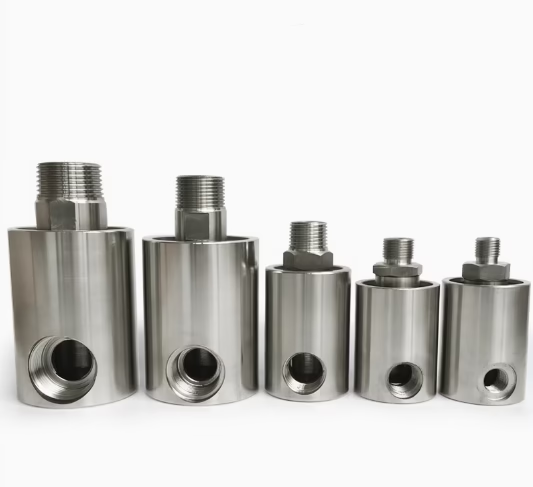H-Type Cooling Water Rotary Union: The Smart Choice for Industrial Equipment Cooling
In modern industry, machines are constantly pushed to their limits. Whether in steel production, textile manufacturing, plastics processing, or CNC machining, one of the most common challenges is excessive heat. Overheating can reduce efficiency, shorten equipment lifespan, and in severe cases, cause costly breakdowns. To combat this, engineers rely on advanced cooling technologies, and among them, the H-Type Cooling Water Rotary Union stands out as a reliable and efficient solution.
But what exactly is an H-Type rotary union, and why has it become such a critical component in industrial cooling systems? This comprehensive guide explores its working principle, structure, applications, installation tips, maintenance requirements, and how it helps industries achieve safe, efficient, and long-lasting performance.
The High Cost of Unchecked Heat in Industrial Equipment
Before we explore the solution, it’s crucial to understand the problem. Overheating isn’t just a matter of machinery feeling warm to the touch; it’s a systemic issue with cascading negative consequences:
- Reduced Equipment Lifespan: Excessive heat accelerates the wear and tear on critical components like bearings, seals, and spindles. It can alter material properties, leading to warping, loss of tolerance, and catastrophic failure.
- Decreased Production Quality: In many processes, precise temperature control is paramount. In plastics manufacturing, for example, inconsistent cooling can lead to product defects, poor surface finish, and material degradation. In machining, thermal expansion can throw off tolerances, resulting in out-of-spec parts.
- Lower Operational Efficiency: When machines run too hot, operators must reduce speed or load to prevent damage, which in turn directly lowers output and productivity. Moreover, because the excess heat wastes energy, it ultimately drives up operational costs.
- Increased Maintenance and Downtime: The most significant cost of overheating is often the unplanned downtime required for repairs. Replacing a seized bearing or a warped roll is a time-consuming and expensive endeavor that brings production to a grinding halt.
- Safety Hazards: Overheated equipment poses a significant risk to personnel, ranging from contact burns to the potential for fire in systems that use hydraulic oils or other flammable materials.
Effective thermal management, facilitated by components such as the H-type rotary joint, directly addresses these challenges, transforming a potential liability into a controlled and optimized process.
What is an H-Type Cooling Water Rotary Union?
So, what exactly is an H-Type rotary joint? At its core, a rotary joint (also known as a rotary union or rotating union) is a mechanical device that provides a seal between a stationary supply pipe and a rotating piece of equipment. Its purpose is to transfer fluid—in this case, cooling water or coolant—into and/or out of the rotating component without leakage.
The “H-Type” designation typically refers to a robust design specifically engineered for water and general-purpose coolant applications. The rotary union features a durable housing and incorporates a balanced sealing mechanism, enabling it to withstand the high pressures and demanding speeds typical of these industrial environments.
Let’s break down its key components:
- Housing: This is the stationary body of the joint, which connects to the coolant supply lines. It is typically manufactured from high-strength materials like brass, cast iron, or stainless steel to resist corrosion and withstand system pressure.
- Shaft (or Rotor): This is the rotating component that threads or bolts onto the machine’s roll or spindle. Made from hardened or stainless steel for maximum durability, it features internal passages that direct the coolant flow.
- Bearings: Precision ball bearings are the crucial link between the stationary housing and the rotating shaft. They must support the shaft, ensure smooth rotation with minimal friction, and handle any potential side loads (though these should be minimized with proper installation). They are often sealed and lubricated for life to ensure longevity.
- Mechanical Seal: This is the most critical and sophisticated part of the rotary joint. It is responsible for preventing the coolant from leaking out at the interface between the stationary and rotating parts. The seal is a two-part assembly consisting of:
A rotating seal face (often made of hardened steel or silicon carbide) that turns with the shaft.
A stationary seal face (typically made of carbon-graphite) that is held in the housing.
A spring or bellows mechanism keeps these two lapped, ultra-flat surfaces in constant contact, creating a fluid-tight barrier that can withstand high pressures and rotational speeds. The choice of seal materials is critical and depends on the fluid type, temperature, and speed of the application.
How Does the H-Type Cooling Water Rotary Union Work?
The genius of the H-type rotary joint lies in its ability to maintain a perfect seal while in constant motion. Here is a step-by-step breakdown of its operation:
- Coolant Ingress: Cooling water or a coolant mixture is pumped from a source through stationary pipes or hoses connected to the inlet port on the rotary joint’s housing.
Fluid Transfer: The coolant flows through the housing and across the mechanical seal interface into the internal passages of the rotating shaft. - Heat Absorption: The shaft directs the coolant into the channels within the rotating machine component (e.g., the core of a spindle, the labyrinth within a calendar roll). As the coolant circulates, it absorbs thermal energy, carrying heat away from the critical areas.
- Coolant Egress: In a dual-flow design (common for H-type joints), the now-heated coolant flows back out of the machine component, into a separate passage within the shaft, across the seal again, and out through an outlet port on the housing. This creates a continuous, closed-loop cooling circuit.
The 360-degree rotation is made possible by the bearing and seal assembly. The bearings allow the shaft to spin freely within the housing, while the mechanical seal dynamically adapts to the motion, maintaining its integrity and preventing leaks. This seamless, continuous rotation ensures that the cooling circuit is never interrupted, regardless of the machine’s operational speed or position.
Why Choose H-Type Cooling Water Rotary Joints?
The advantages of an H-Type rotary union compared to conventional cooling systems are significant:
1. High Efficiency Heat Dissipation
The internal spiral flow design maximizes contact between coolant and heated surfaces.
Ensures faster cooling for high-speed or heavy-duty applications.
2. Reliable Sealing System
Equipped with advanced sealing technologies (carbon-graphite vs. hardened steel, or silicon carbide seals).
Prevents leakage even under high-pressure and temperature conditions.
3. Durability and Longevity
Built with corrosion-resistant materials such as stainless steel, brass, or carbon steel.
Withstands harsh industrial environments, including exposure to thermal cycling and abrasive fluids.
4. 360° Continuous Rotation
No need to stop machines for cooling; the rotary union ensures uninterrupted operation.
Ideal for industries requiring continuous production lines.
5. Adaptability
Compatible with different coolants (water, glycol-based fluids, synthetic coolants).
Available in multiple sizes, passage configurations, and connection types (flange, threaded, quick-connect).
Typical Applications of H-Type Cooling Water Rotary Unions
These rotary unions are widely used across industries that demand temperature control in rotating equipment.
1. Metalworking and CNC Machining
Coolant delivery to spindles and cutting tools.
Prevents tool wear, maintains dimensional accuracy, and supports high-speed machining.
2. Plastics and Rubber Processing
Cooling molds, rollers, and extruders.
Enhances product quality by maintaining consistent mold temperatures.
3. Textile Industry
Used in dyeing machines, drying cylinders, and fabric finishing equipment.
Maintains precise thermal control for uniform fabric treatment.
4. Steel and Aluminum Mills
Cooling rotating rolls in hot rolling and continuous casting lines.
Protects bearings and extends roll service life.
5. Energy and Power Plants
Transfers cooling water in turbines and generators.
Prevents overheating during continuous operation.
6. Food and Beverage Processing
Ensures hygienic cooling in rotary cookers, pasteurizers, and bottling machinery.
Designed with food-grade seals when necessary.
Best Practices for Installing an H-Type Cooling Water Rotary Union
Proper installation is essential to maximize service life and efficiency.
Correct Positioning – Install the rotary joint close to the heat source to minimize heat loss.
Alignment – Ensure accurate shaft alignment to prevent premature seal wear.
Filtration – Always filter coolant before entering the rotary union to avoid debris-induced seal damage.
Flexible Piping – Use hoses that allow for slight misalignment and vibration.
Torque Considerations – Avoid overtightening connections, which may damage the seals or housing.
Maintenance Tips to Extend Service Life
Like any mechanical device, the H-Type cooling water rotary union requires periodic inspection and maintenance.
Seal Inspection – Check regularly for leaks or worn seals.
Bearing Lubrication – Ensure bearings are properly lubricated or replaced when necessary.
Cleaning – Flush cooling channels to prevent scale buildup or clogging.
Performance Monitoring – Monitor coolant flow rate and pressure to detect abnormalities early.
Replacement Parts – Use genuine or compatible spare parts for consistent performance.
Comparing H-Type Rotary Unions with Other Cooling Solutions
| Feature | H-Type Cooling Water Rotary Union | Conventional Hose Connections | Air-Cooled Systems |
|---|---|---|---|
| Rotation Capability | Continuous 360° | Limited | Not applicable |
| Cooling Efficiency | High | Medium | Low to Medium |
| Leak Protection | Advanced Seals | Basic | Not applicable |
| Maintenance Needs | Moderate | High | Low |
| Applications | Heavy-duty, high-speed | Low-speed, low-pressure | General cooling, not precision |
Clearly, the H-Type rotary joint provides superior performance for industries requiring precise and reliable cooling in rotating equipment.
The Smart Choice: High-Performance Alternatives for Cost-Effective Reliability
For decades, the rotary joint market has been dominated by a few legacy brands. While these brands offer quality products, their premium pricing can be a significant burden on procurement and maintenance budgets.
As a leading supplier of industrial components, we specialize in providing H-type cooling water rotary joints that offer a superior value proposition. Our products are engineered to be direct, drop-in replacements for mainstream models, designed and manufactured to meet or exceed original performance specifications.
Here’s why our rotary joints are the intelligent choice for your operations:
- Precision Manufacturing: We utilize advanced CNC machining to ensure every component meets exacting tolerances, guaranteeing perfect alignment and smooth operation.
- Premium Materials: We use high-grade stainless steel shafts, durable brass housings, and best-in-class mechanical seal combinations (such as Carbon-Graphite vs. Silicon Carbide) to ensure maximum resistance to wear and corrosion.
- Performance Tested: Every unit undergoes rigorous quality control testing for pressure, speed, and leakage before it leaves our facility, ensuring it performs flawlessly right out of the box.
- Unbeatable Value: By optimizing our manufacturing processes and supply chain, we deliver a product of exceptional quality at a fraction of the cost of legacy brands. This allows you to reduce your MRO (Maintenance, Repair, and Operations) spending without compromising on reliability.
Selecting the Perfect H-Type Rotary Joint for Your Needs
Choosing the correct model is critical for optimal performance. Consider the following parameters:
- Pressure: What is the maximum operating pressure (PSI or Bar) of your cooling system?
- Speed: What is the maximum rotational speed (RPM) of your equipment?
- Temperature: What is the operating temperature range (°F or °C) of the coolant?
- Flow Rate: What is the required flow rate (GPM or LPM) to achieve effective cooling?
- Media Type: Are you using plain water, a glycol mixture, or a coolant with specific additives?
- Connection: What are the size, type (NPT, BSP, etc.), and configuration (single or dual flow) of the ports you need?
The Smart Choice: High-Performance Alternatives for Cost-Effective Reliability
For decades, the rotary joint market has been dominated by a few legacy brands. While these brands offer quality products, their premium pricing can be a significant burden on procurement and maintenance budgets.
As a leading supplier of industrial components, we specialize in providing H-type cooling water rotary joints that offer a superior value proposition. Our products are engineered to be direct, drop-in replacements for mainstream models, designed and manufactured to meet or exceed original performance specifications.
Here’s why our rotary joints are the intelligent choice for your operations:
- Precision Manufacturing: We utilize advanced CNC machining to ensure every component meets exacting tolerances, guaranteeing perfect alignment and smooth operation.
- Premium Materials: We use high-grade stainless steel shafts, durable brass housings, and best-in-class mechanical seal combinations (such as Carbon-Graphite vs. Silicon Carbide) to ensure maximum resistance to wear and corrosion.
- Performance Tested: Every unit undergoes rigorous quality control testing for pressure, speed, and leakage before it leaves our facility, ensuring it performs flawlessly right out of the box.
- Unbeatable Value: By optimizing our manufacturing processes and supply chain, we deliver a product of exceptional quality at a fraction of the cost of legacy brands. This allows you to reduce your MRO (Maintenance, Repair, and Operations) spending without compromising on reliability.
Conclusion
The H-type cooling water rotary joint is more than just a piece of plumbing; it is an enabling technology. It is the component that allows your most critical rotating equipment to operate at its peak potential, safeguarding it from the destructive effects of heat. By ensuring efficient thermal transfer, it protects your investment, enhances your product quality, and maximizes your productivity.
When it comes to such a critical component, you shouldn’t have to choose between performance and price.
Are you ready to enhance your equipment’s reliability and reduce your operational costs? Contact our team of engineering experts today. We’ll help you select the perfect H-type rotary joint for your application and demonstrate the tangible benefits of a high-performance, high-value solution.
